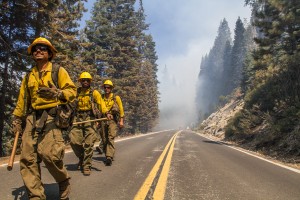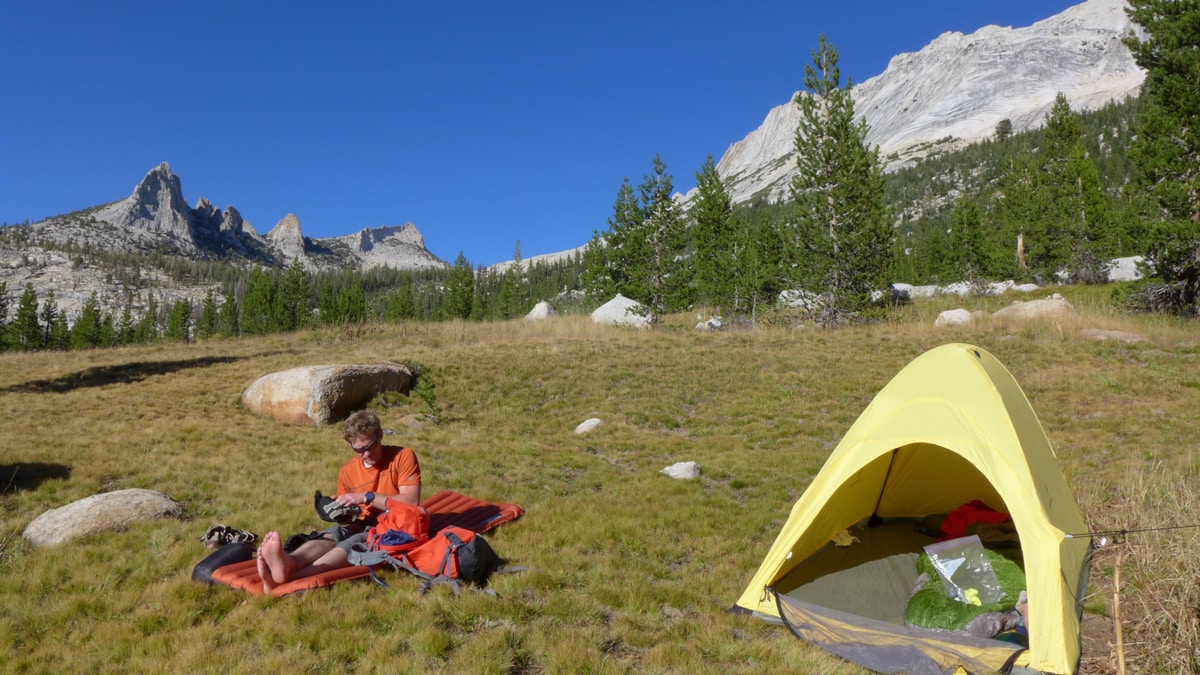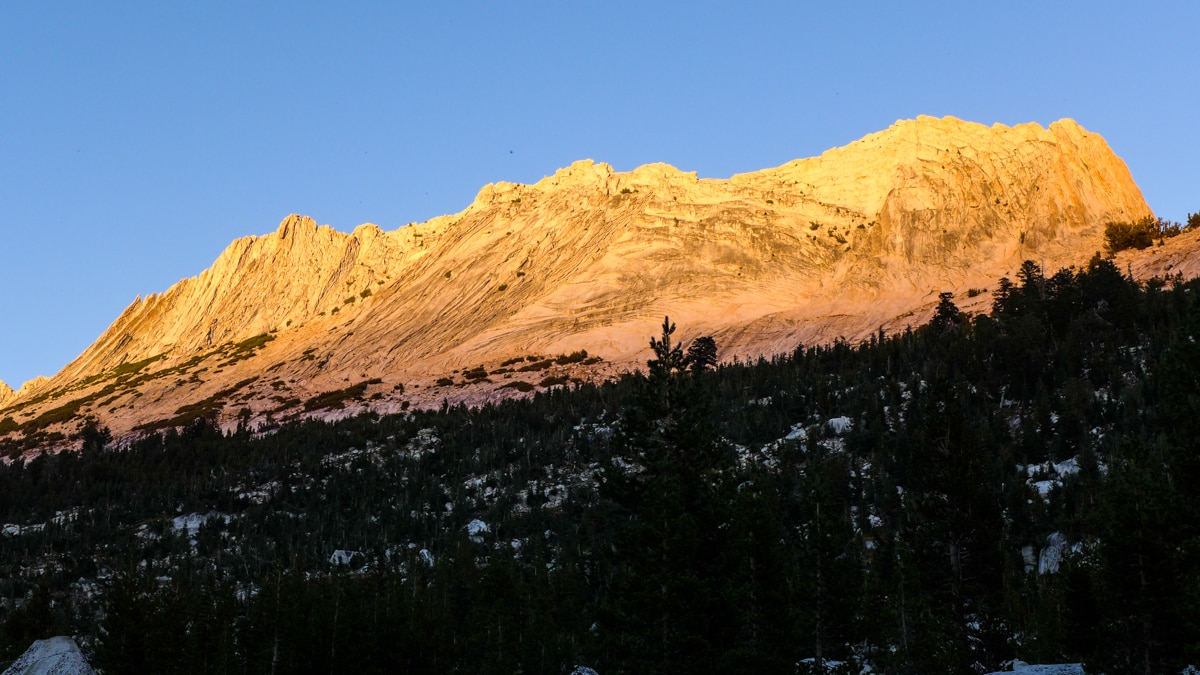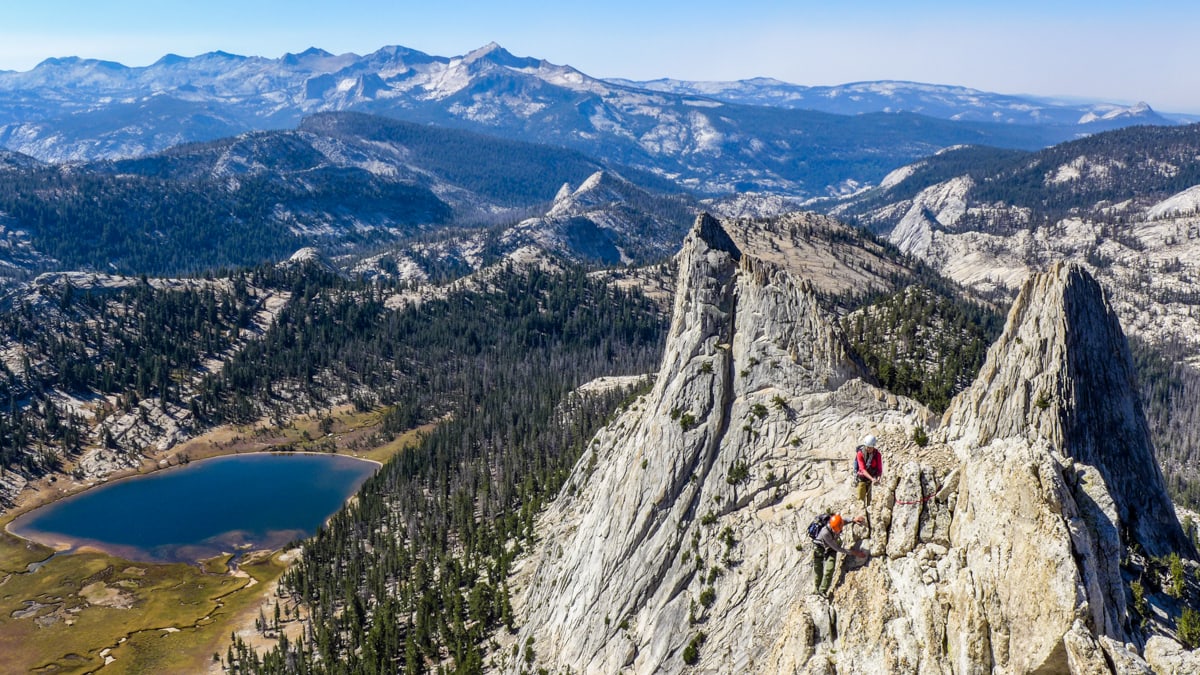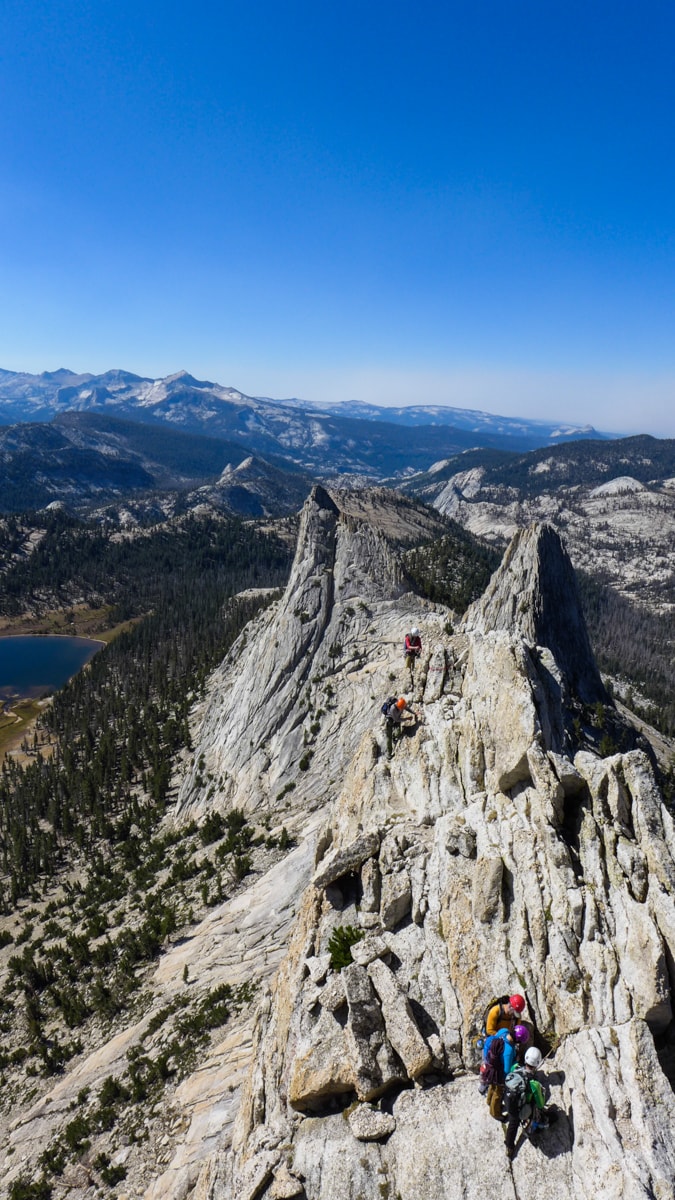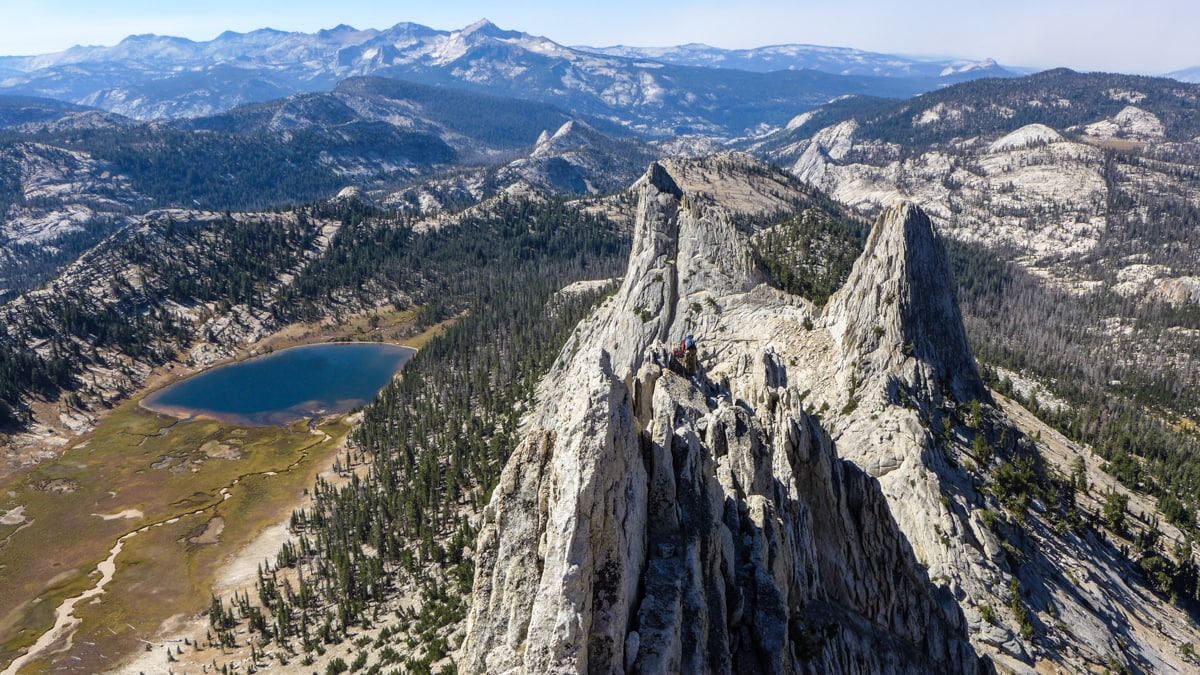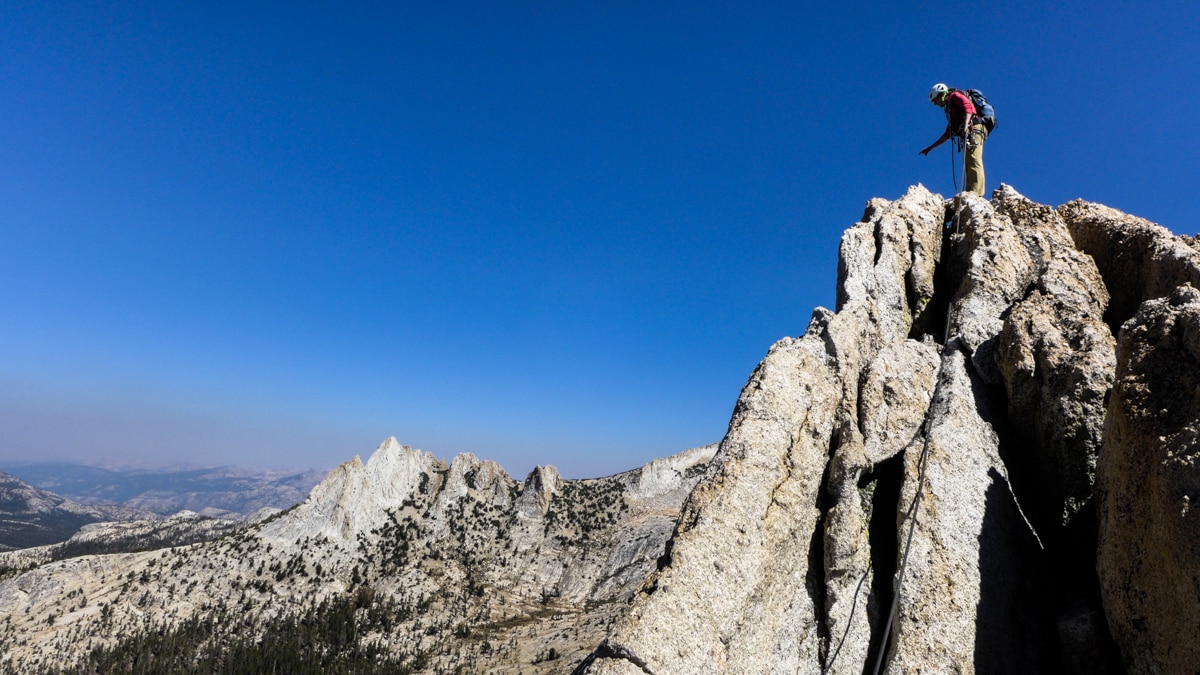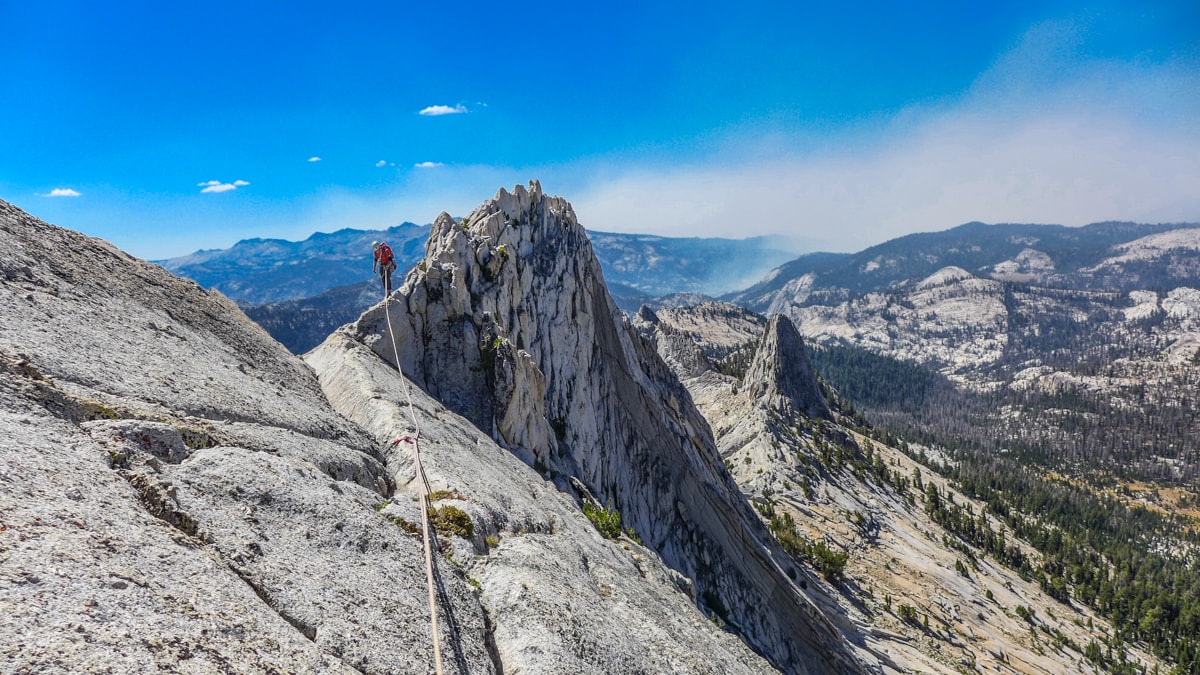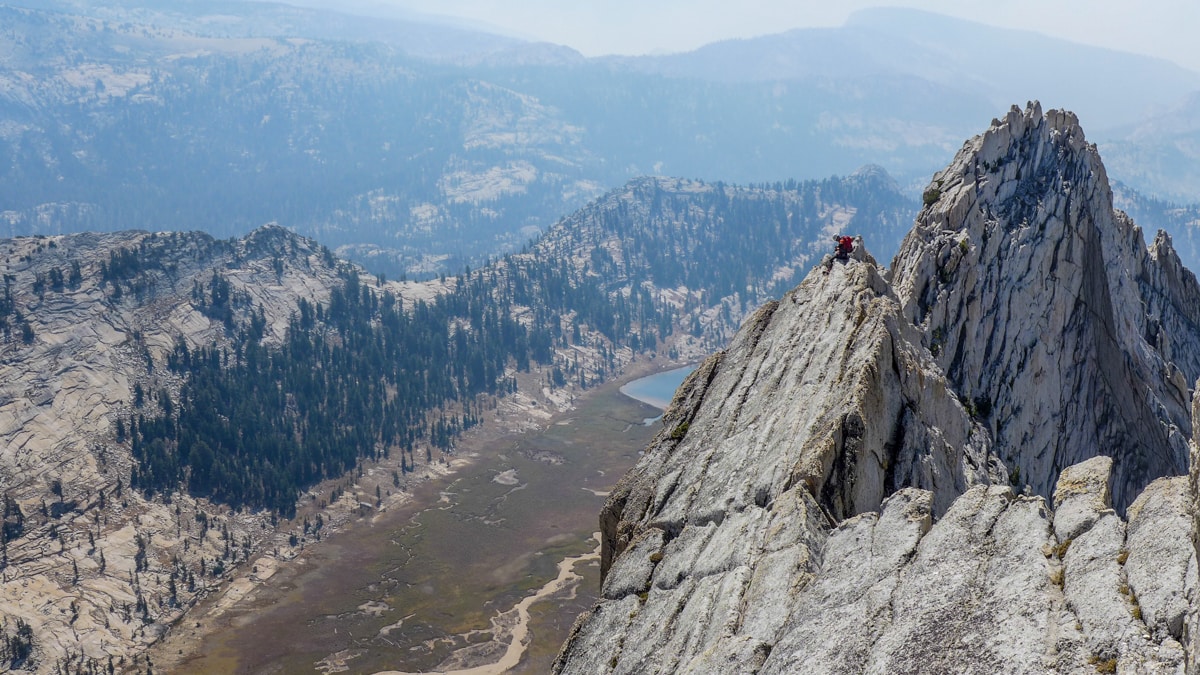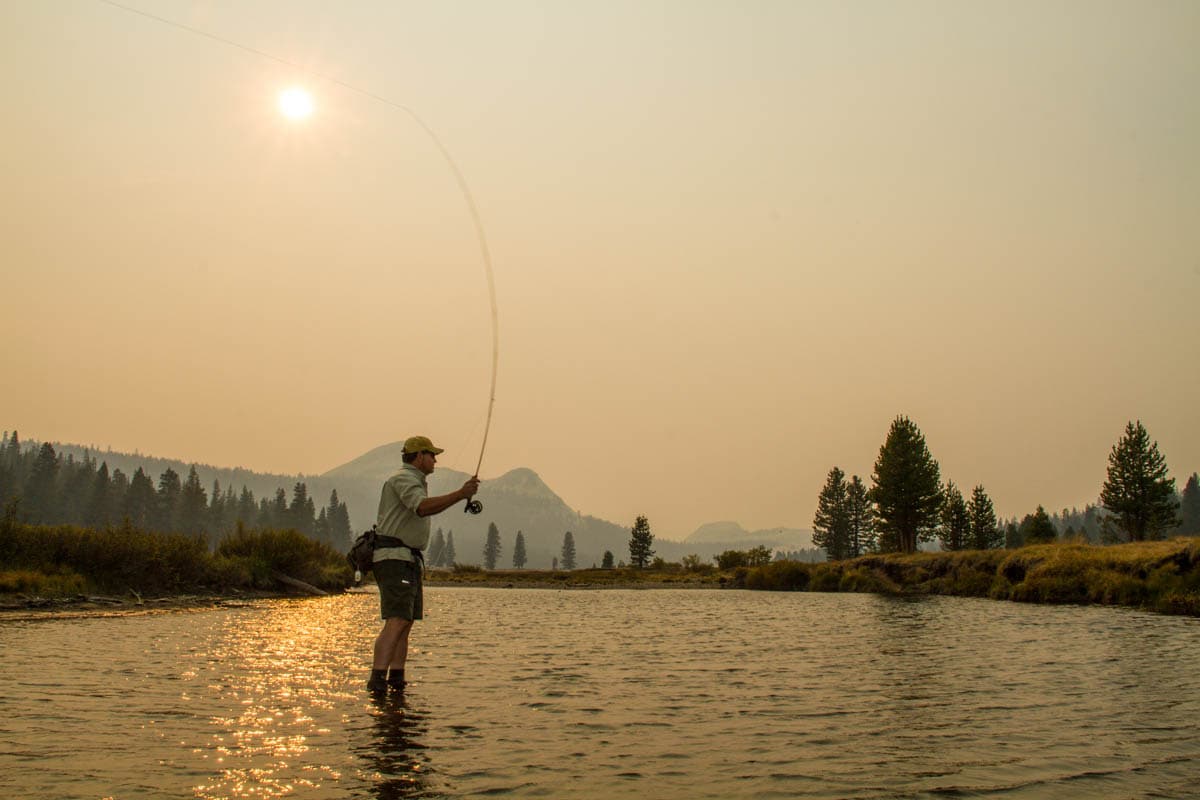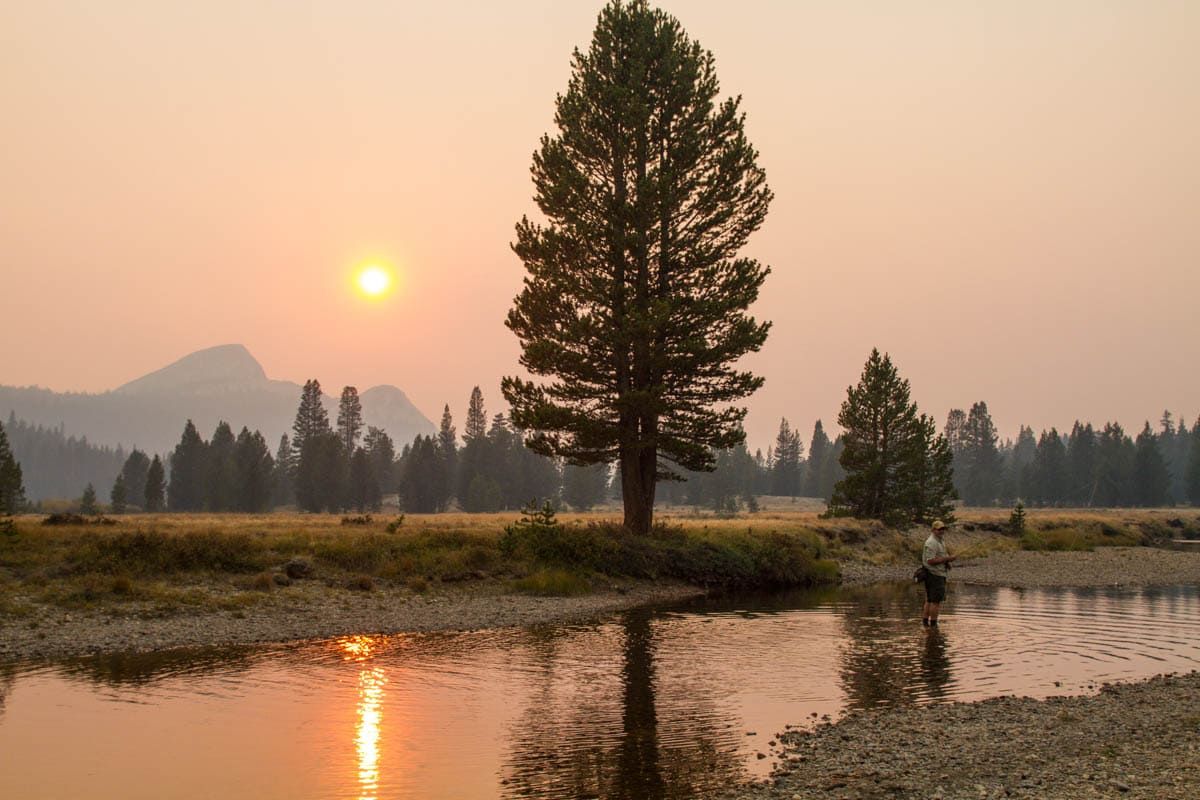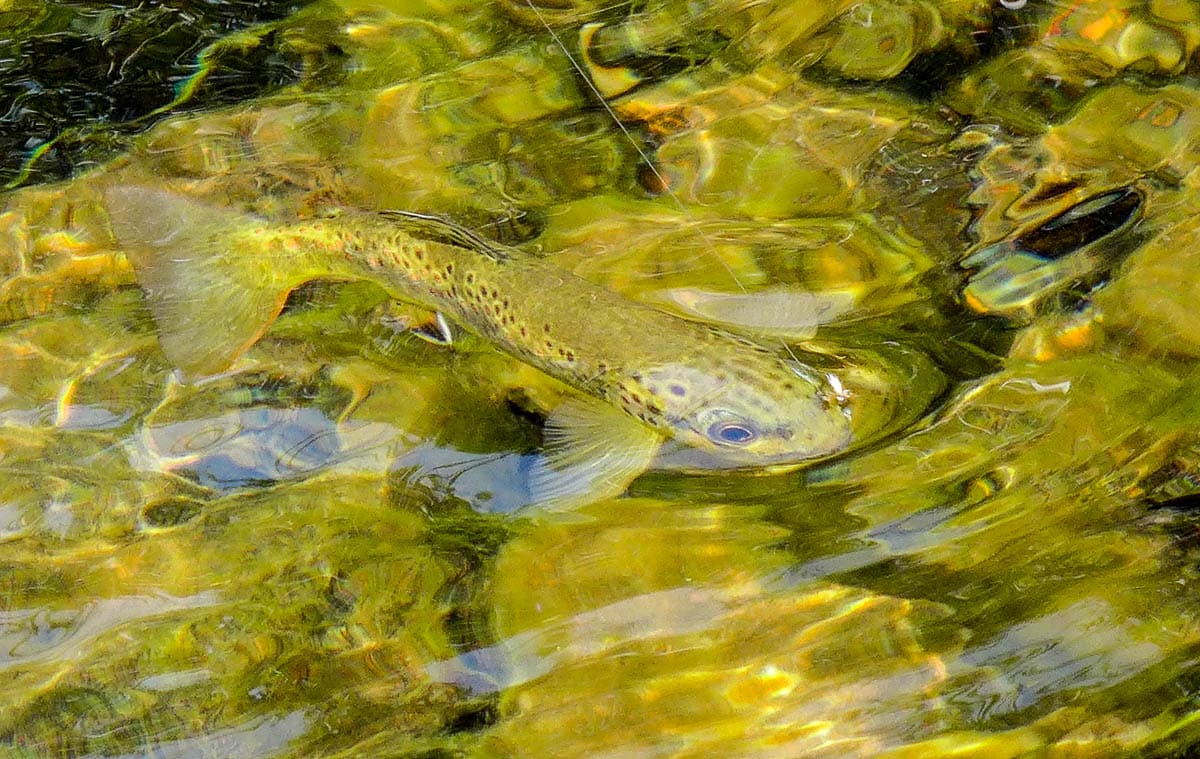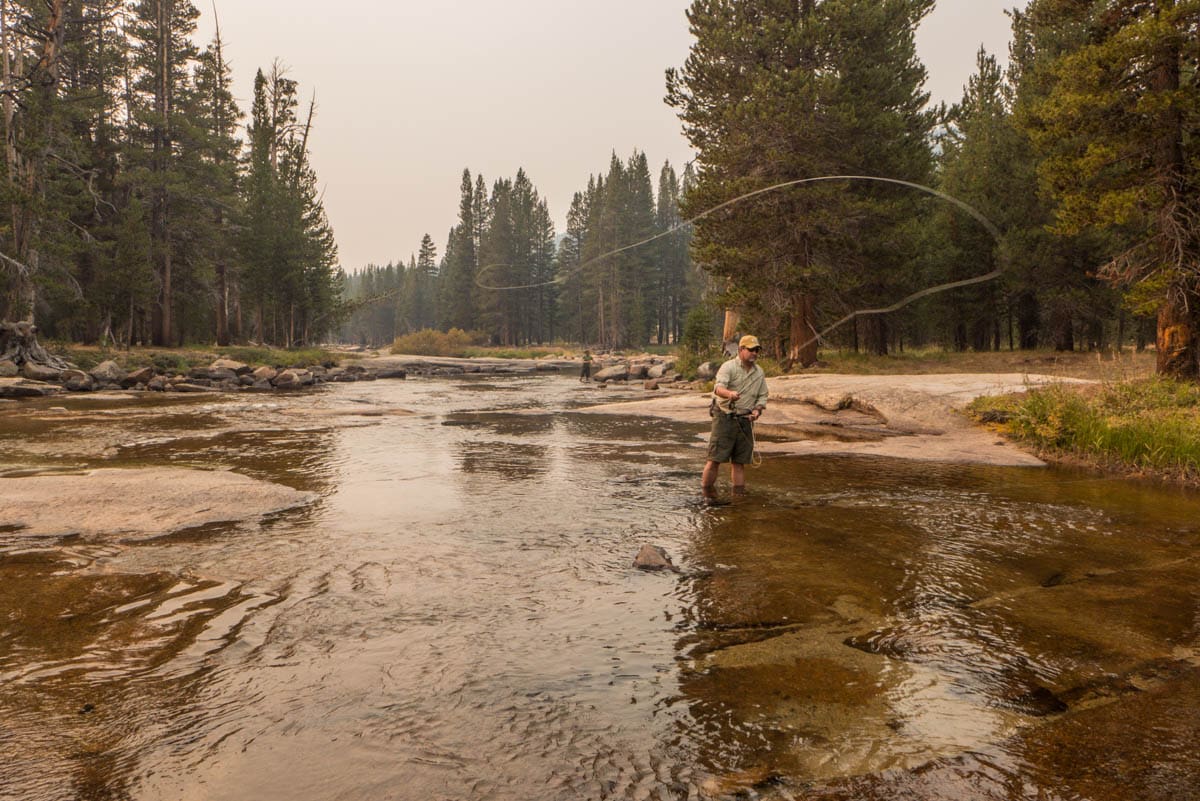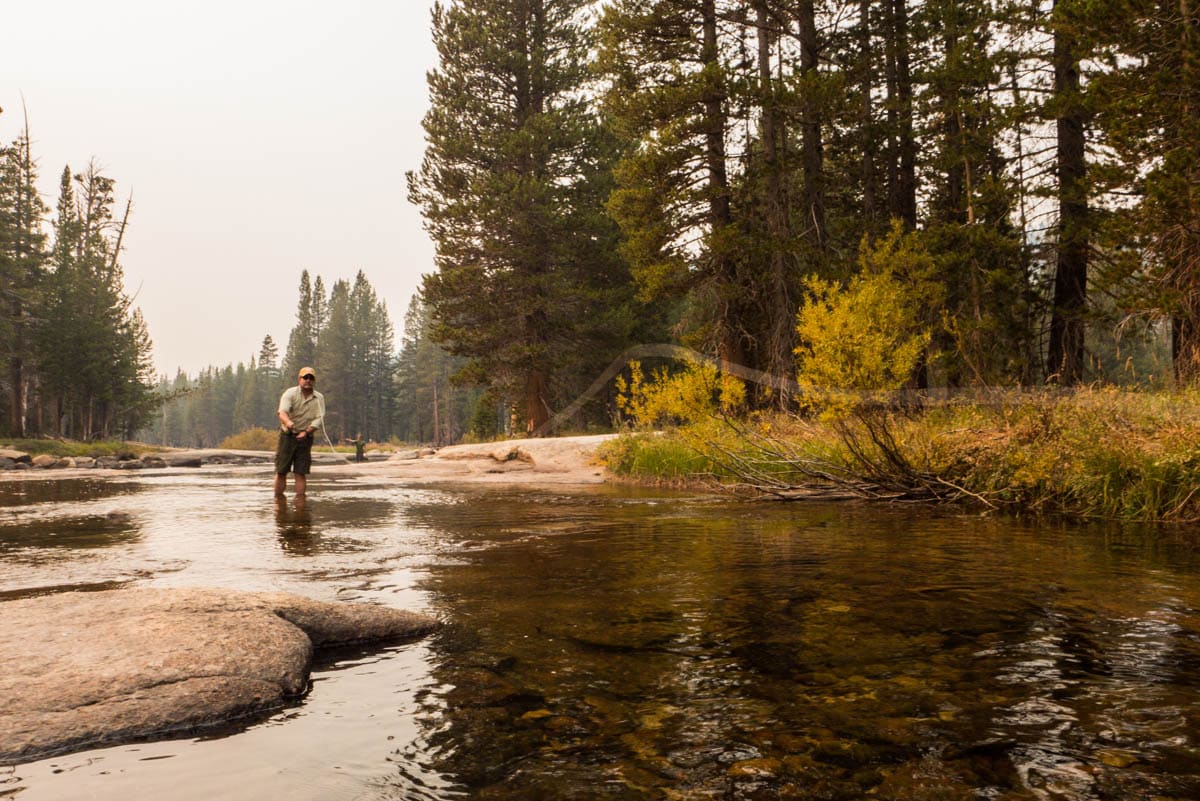Earlier this month Rob Vandergrift and I headed out to Yosemite for some early autumn climbing and fishing. We had spectacular weather, save for the apocalyptic Rim fire. This fire, third largest in the state’s history as of the time of this blog has committed over one-hundred million dollars and 5,000 firefighters. It’s terrible to see, as it was human caused.
Despite the fire, we had a wonderful time climbing in the valley. We ascended part of the Royal Arches for a warm-up, then moved to Tuolumne for some alpine climbing. After hiking into the Echo Lake basin, we traversed Matthes Crest from south to north. We did have to retreat two-hundred feet from the summit due to a shift in winds that brought in the thick smoke from the fire. Regardless, the exposure was extreme and the position memorable.
This was followed by a day of fly fishing in the Dana Fork and Tuolumne Rivers. We caught scores of wild brookies and browns, each more colorful than the prior. It’s a painful realization that the lower Tuolumne, or “Mighty T” is now largely scorched from the enormous blaze. It was set by a careless bowhunter, who purportedly notified the authorities so they could get to work containing it. Alas, the cat was out of the bag. What unfolded was over 400 square miles of charred forest. With the ground vegetation stripped clean, erosion this winter will be a major problem for this watershed which harbored over 96% of the Rim Fire. In addition to pH derangement in the river proper, the rough sediment that will invariably flush into the T will yield gill abrasion, affect spawning habitat, and likely lead to the temporary demise of many fish.
Fires help forests. They’re part of the life cycle, their bursts of heat being essential for conifer pods to open, to spread seeds, to revitalize the soil. But this area’s time had not yet come. While the fire roared in the lower T, I angled the upper stretch. Thick with trout, there is a certain irony in this idyllic waterway. These fish really shouldn’t be there. They were stocked by wandering cattlemen and shepherds over one hundred years, sometimes carrying fingerlings hundreds of miles in coffee cans prior to stocking the water to ensure themselves a food supply. There’s little data on how this introduction of non-natives has possibly affected other organisms in the upper T, yet one can’t help but to assume this case of non-native introduction was indeed like every other, impacting the habitat in some way.
The T is a stately flow, and like other rivers that have endured an abrasive flushing it will likely recover. It’s happened before. The Toutle River in Washington survived the eruption of Mount St. Helens and within a few years had a measurable steelhead run. The hope is that the Elwah River in Washington will do the same after it’s dam removal, although many remain skeptical as hatchery projects are complicating its restoration.
The men and women who contained the Rim fire are true heroes. They pack in to the battleground and fight a true war. They get burned. Sometimes they get killed. And as one Smokejumper told me, “The code of ethics is to never complain. It’s hot. You hurt. You’re burned. But you keep your mouth shut and keep fighting the monster.”
Read more about this incident and the river’s prospects in Fall, 2013’s issue of The Drake.



